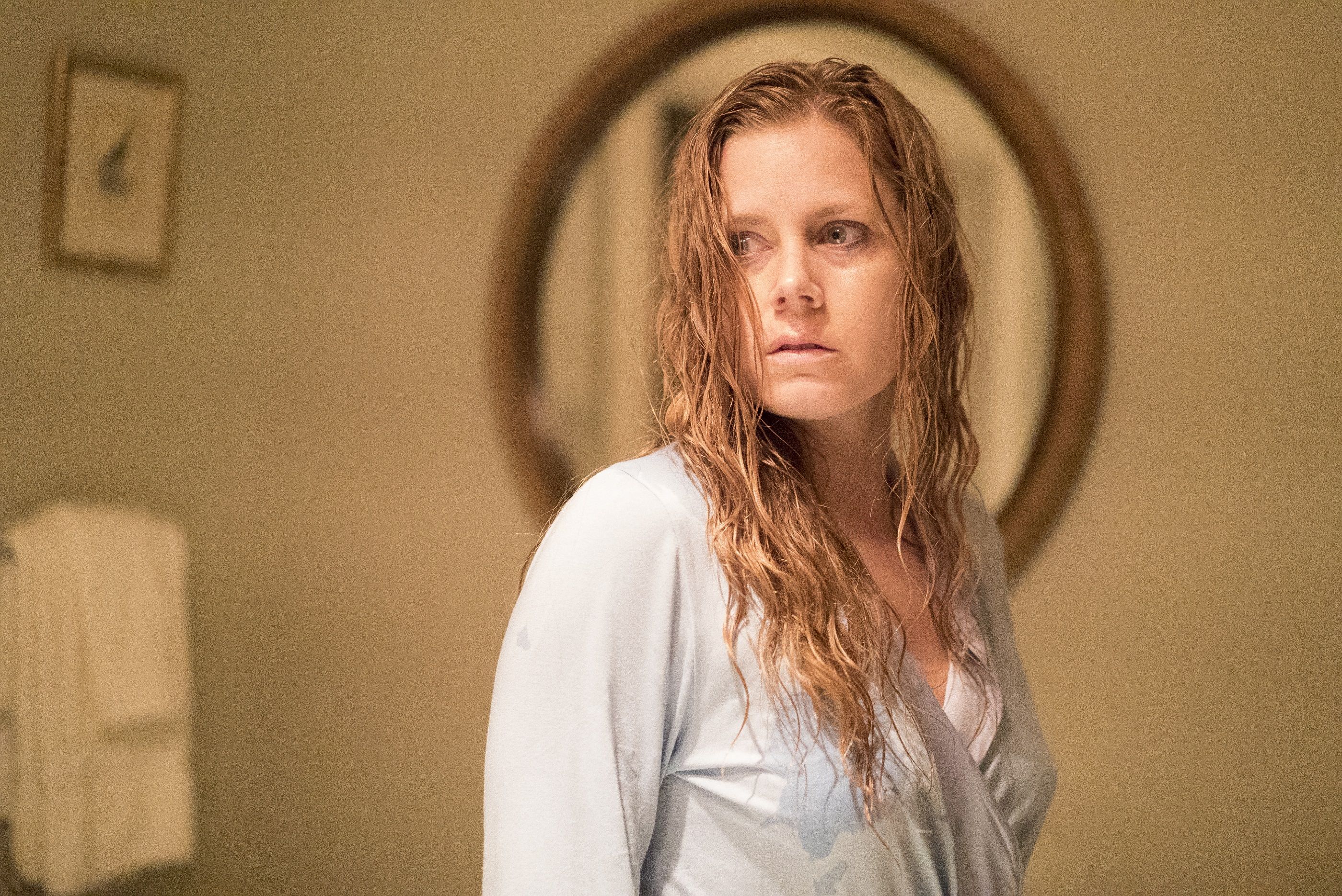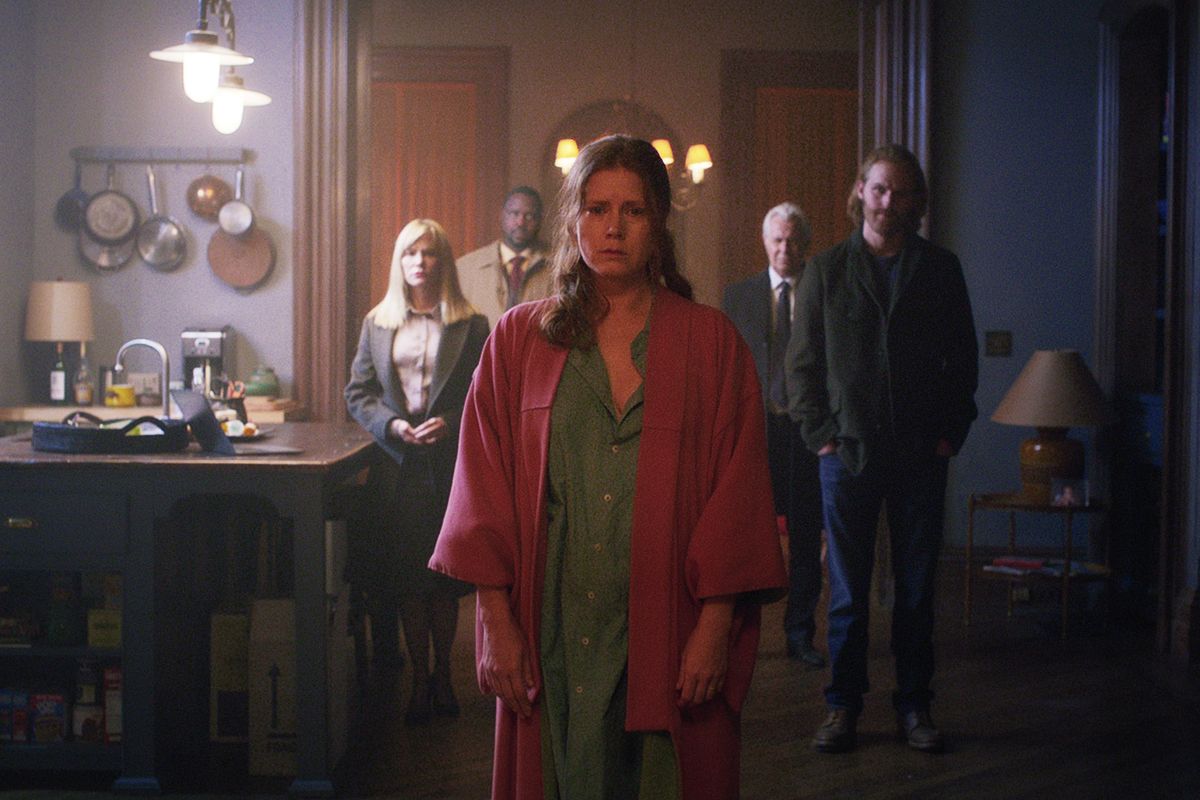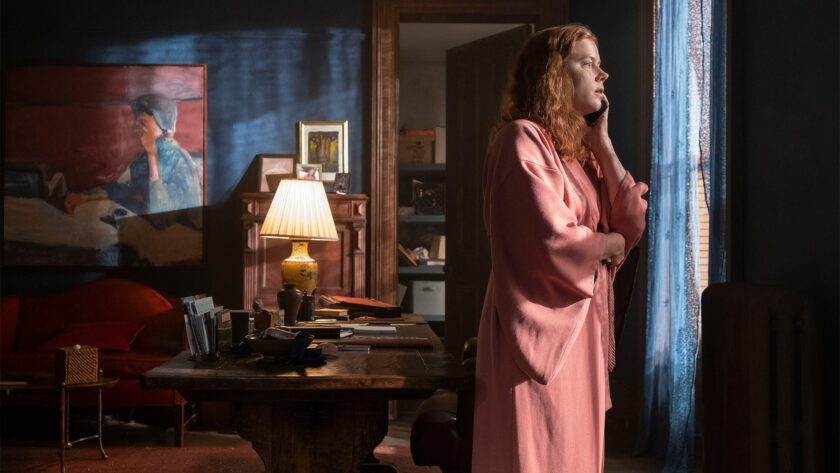Alexander Hancock reviews the much anticipated psychological thriller and challenges the negative reviews.
When A.J. Finn’s Hitchcockian thriller ‘The Woman in the Window’ first hit shelves in 2018, talks of a film adaptation soon followed. With a gripping plot, compelling characters, and timely take on gaslighting culture, a cinematic retelling only seemed fitting. When the film was eventually announced, with Amy Adams set to star and Joe Wright to direct, the stars seemed to be aligning. Hopes for another Gone Girl were, however, called into question when news of poor test screenings and subsequent reshoots circulated online. A flurry of controversies surrounding the author and a series of delays didn’t help either. Now premiering on Netflix, the film has been met with resoundingly negative criticism from both viewers and critics, with some slamming the adaptation as maddening and shallow. But is it really that bad?
Sequestered in a grand brownstone deep in New York City, agoraphobic Anna Fox spends the better part of her days alone, downing bottles of merlot and indulging in old Hollywood classics. Other than a weekly meeting with her psychologist and the odd brush with her elusive tenant, Fox’s debilitating anxiety means that any attempt at a meaningful relationship is largely fleeting; even her ties to her ex-husband and nine-year-old daughter are limited to a quick phone call. Her only steady contact with the outside world is through the long, towering windows from which she observes the lives of her neighbours. There’s a prayer group that takes place next door, along with a trumpeter and a young couple, all of whom she watches to get through the tedium of her days.

The monotony of Anna’s life is broken, though, when a new family, the Russels, move in across the street. Ethan, the son, is the first to enter her life, bearing gifts and an emotional fragility that immediately draws Anna – a child psychologist – closer to him. A bout of anxiety then leads to a chance encounter with his mother, Jane, with whom Anna spends the evening drinking and playing cards. Eccentric and slightly off-kilter, Jane quizzes Anna about her battle with agoraphobia while hinting at her own personal struggles. That leaves Alistair: the controlling husband whose overbearing presence is felt in more ways than one. Increasingly invested in the lives of the Russels, Anna secretly studies the family’s interactions unfold across the way over the coming days. What first appears to be a normal domestic setting – dinners around the table, fraught arguments between parents – turns to something more sinister. One night, upon waking up from a wine-induced slumber, Anna witnesses Jane brutally killed. After frantically phoning the police, two detectives show up at Anna’s house along with Ethan and Alistair who deny any claims of strange happenings. Then, a woman who Anna doesn’t recognise arrives and introduces herself as Jane.
Wright’s twisty thriller will inevitably evoke memories of Hitchock’s Rear Window, or even Rachel Hawkins’ novel, The Girl on the Train. From the iconography — rusted fire escapes, Venetian blinds — down to the intricacies of its plot — an outsider looking in on another family’s life, a suspicious murder in the house across the way — Wright’s film plays out as a homage to 1950s film noir and contemporary thrillers with their portrayals of broken women. Much like the other female leads of the genre, Wright’s protagonist is the archetypal unreliable narrator, whose struggles with alcoholism and prescriptions raise suspicions about whether her experiences are real or just visual hallucinations: did she really see Jane murdered? Or was it a figment of her imagination?
Amy Adams’ performance as a woman reeling from the effects of addiction and anxiety is compelling but for someone of her calibre, the script does little to showcase her versatility as an actress. The same can be said for Gary Oldman whose presence on screen is so brief, he never really gets the chance to sink his teeth in a role brimming with potential.
Perhaps the greatest weakness of The Woman in the Window is its pacing. With little to no exposition whatsoever, any opportunity to empathize with Anna’s character is hindered by the fact that the audience is thrust into the narrative with no explanation of who she is. While all great mystery thrillers maintain a degree of ambiguity, Wright’s introduction feels rushed purely for the sake of arriving at the film’s climax. This soon becomes a pattern; scenes with great potential for suspense are suddenly cut short by rapid edits while moments of palpable tension are left with no room to breathe. Nowhere is this more noticeable than in one of the film’s final sequences which passes so quickly, you’ll hardly realise the magnitude of what you’ve just watched.
Visually, however, the film is striking. Much like the murky, green and yellow hues you might come to expect in some of David Fincher’s work, the color grading for The Woman in the Window is muted and grounded in gloomy tones that lend the film an unsettling quality. These dark hues also help intensify the odd pops of reds and blues that are peppered throughout the film, like splashes of blood or the glaring light from Anna’s phone. Drawing on a muted color pallette and low-key lighting, Wright astutely captures how sheltered and confined the protagonist’s life is, where any glimpse of bright color is just as blinding for Anna as it is the audience.

Bruno Delbonnel’s cinematography also creates an immersive and tense atmosphere. Guiding the viewer through the penthouse, with sweeping long takes and carefully paced tracking shots, Delbonnel illustrates the sheer enormity of Anna’s townhouse, in turn, highlighting her deep sense of isolation. Each shot is carefully framed; at times resembling one of Edward Hopper’s classic realist paintings. One-shot, in particular, depicts two symmetrical windows on either side of the frame: in the left window, Anna, cloaked in red hues, stares woefully at Jane, positioned in the right third of the frame, who returns across the street to her compound. Each third of the frame paints a different picture, with multiple narratives unfolding at once. This kind of visual storytelling makes you wonder how the viewing experience would have been in a traditional cinema setting.
So much of the criticism directed towards The Woman in the Window is undoubtedly rooted in disappointment born from unreasonable hype. With its magnetic cast, acclaimed director and award-winning screenwriter – not to mention the bestselling novel – the overwhelming anticipation for the film which started long before its eventual release, was in more ways a curse than it was a blessing. But for all of its structural pitfalls and erratic pacing, the film does boast some strong performances and enthralling visuals. While brief, the film’s exploration of gaslighting culture and misogyny is captivating and raises important questions surrounding the different forms psychological abuse can take. The Woman in the Window may not match the calibre of classic contemporary thrillers, but in a year where we’ve all been confined to our homes, it’s a memorable watch and one that showcases the wearing effects of isolation – something we’ve become all too familiar with.




